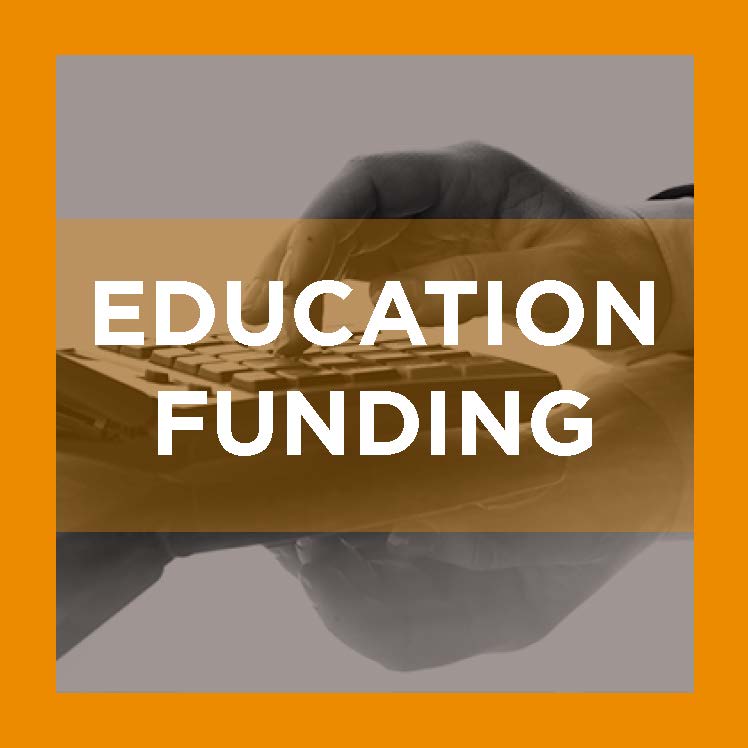The numbers are staggering. Since states began to issue shelter-in-place orders, virtually all 50 states have significantly reduced economic activity, and over 35 million Americans have lost their jobs. The International Monetary Fund predicted that this will be the worst economic downturn since the Great Depression. This downturn will impact state tax revenue and thus result in reduced state P-12 education spending. The questions are, how badly will the public education system be affected, and what can state policymakers do about it?
State Revenue and Public Education Spending
According to the U.S. Census, 47.1% of public P-12 education funding comes from state sources. Another 44.9% comes from localities, and typically just 8% comes from the federal government. While localities rely on more stable property taxes, the vast majority of state revenue (just under 90%) comes from two sources — sales and income taxes. Retail sales started to take a hit in February, while state unemployment numbers — which will ultimately affect overall wages and taxes — did not begin to climb until the end of March. Because of this, we’d expect to see state sales tax revenue decrease first, but that will be followed quickly by very large reductions in income tax revenue.
CARES Was a Good, First Step
The federal government has recognized that public education funding will suffer during and after the pandemic. Because of this, the feds provided $16.2 billion in the recent Coronavirus Aid, Relief, and Economic Security Act to help fund public education. While the additional federal funding is helpful, it is not nearly sufficient to make up for potential state budget cuts. CARES education funding is equivalent to only 1.9% of P-12 education revenue in the 50 states and the District of Columbia in the 2020–21 school year. To put it another way, this additional federal education funding is equivalent to only $286 per pupil, on average.
The Impact of State Budget Cuts
I have spoken to revenue and budget experts from around the country, and none currently feel confident in projecting how far state revenues will fall this year and next. Some preliminary estimates from states are showing state revenue drops of between 10% and 20%. These drops are likely to be even larger in 2021–22, when the income tax effects will be felt more fully. Furthermore, the extraordinary costs to states of health care investments and social services for those rendered unemployed, homeless and food insecure by the crisis will absorb a large share of the shrinking state revenue, leaving education far behind.
If we assume that state education spending will decrease by 10% this coming year, P-12 programs would see a reduction of over $21 billion — even after the current CARES Act funding takes effect. A 20% drop in state education budgets would result in funding decreases of just over $57 billion for America’s public schools. This would likely be equivalent to the loss of nearly 750,000 teaching jobs. Because of these large projected shortfalls, education leaders have advocated for $200 billion for schools in the next recovery act (CARES II), a very sizable increase over the current allocation. This would be spent over the next two to three years as the full effects of the recession set in.
Instead of trying to guess what will happen to individual state education budgets under different scenarios for state budget cuts and federal aid, I created an interactive tool that can be adjusted to look at any budgeting scenario. I used the CARES Act distribution formulas, which follow Title I allocations, and further assumed that half of the governor’s discretionary education dollars will go to P-12 schools (with the remainder to higher education). I used current data about spending, revenue sources and enrollment in each state; and I took into account the differences in the state share of education funding to calculate how the current CARES Act — and other larger allocations — would affect education spending, while also examining the effects of state budget cuts of varying sizes.
This tool shows, for example, that at the current CARES Act funding level, a 20% state funding decrease in Georgia would result in a per-pupil funding cut of $869, even after the stimulus funds land — while that same size budget cut would result in a $3,530 reduction in per-pupil spending in Vermont. You can explore the results of the stimulus investment in conjunction with state education budget cuts of different sizes for any of the states.
What States Can Do
Knowing that the current federal funding program will not be sufficient to cover state education cuts, what can state and local leaders do? The following are some possibilities that education leaders can explore as they face difficult budgetary decisions: Ask for increased federal assistance: A 30% reduction in state education funding over each of the next two years could result in cuts to public P-12 systems of almost $200 billion. This kind of massive state funding cut would require a federal investment to allow districts to weather the economic downturn without dramatically impacting the education of our country’s neediest students.
Protect vulnerable student groups: Unfortunately, services for students who are English learners, those with disabilities or those from low-income families tend to feel the brunt of education cuts. State and district leaders should ensure that any cuts made to education do not fall disproportionately on these high-need student groups.
Increase flexibility: If states have to cut education funding, they may be able to provide districts with greater flexibility in how they spend their dollars. After the last economic downturn, states such as California changed their funding systems to a weighted student formula — in lieu of a bevy of categorical programs — to allow districts greater financial freedom while focusing more on student needs. States may want to take this opportunity to create more flexible, equitable and responsive funding systems.
The times ahead will be difficult for the education community. However, education leaders will stay focused and we know that we will overcome these difficult times. With some planning and hard work, state policymakers can ensure that all students in this country will have the resources they need to enable them to reach their full educational potential.





